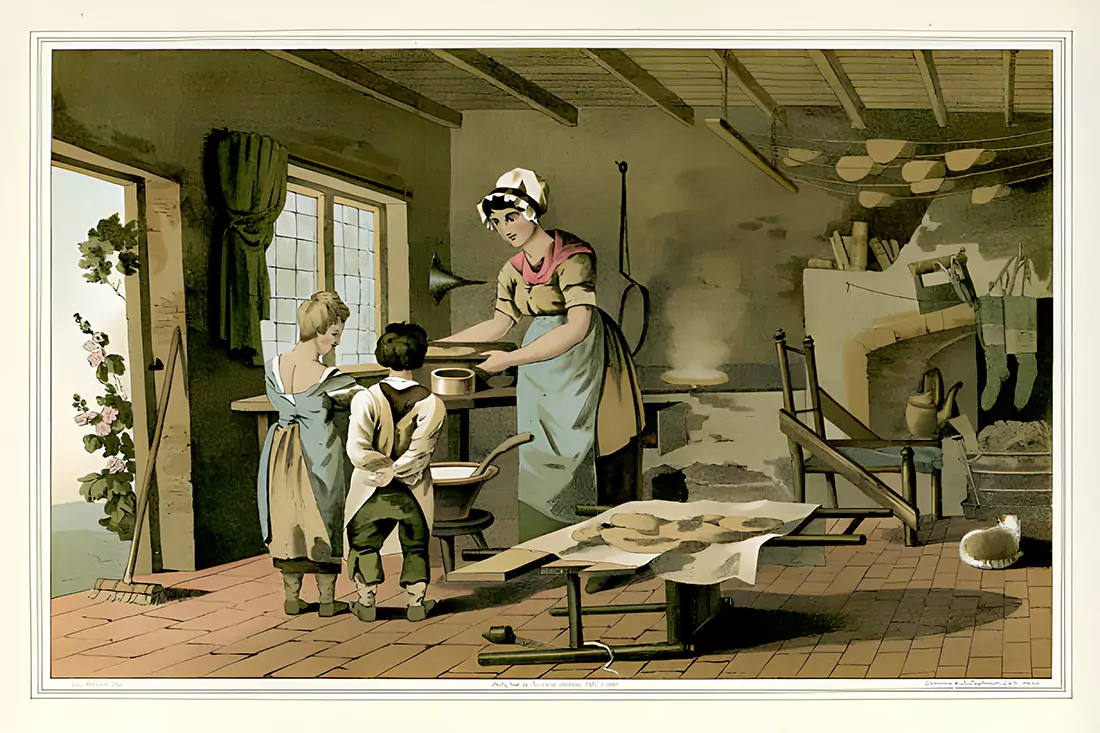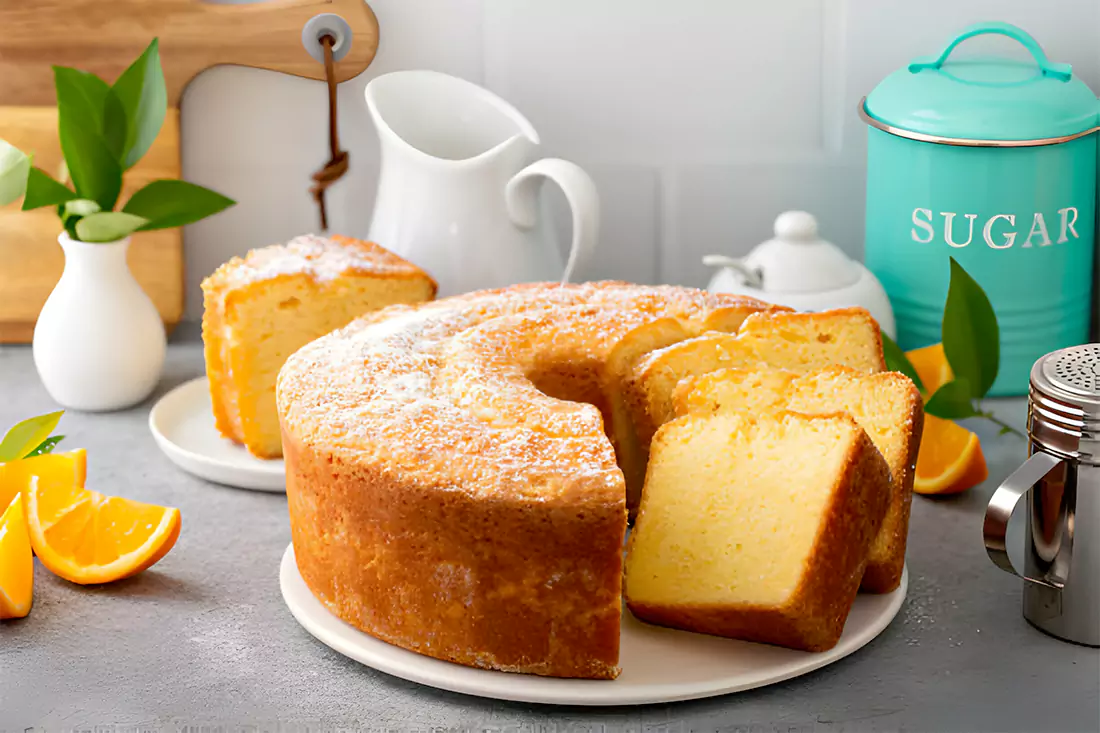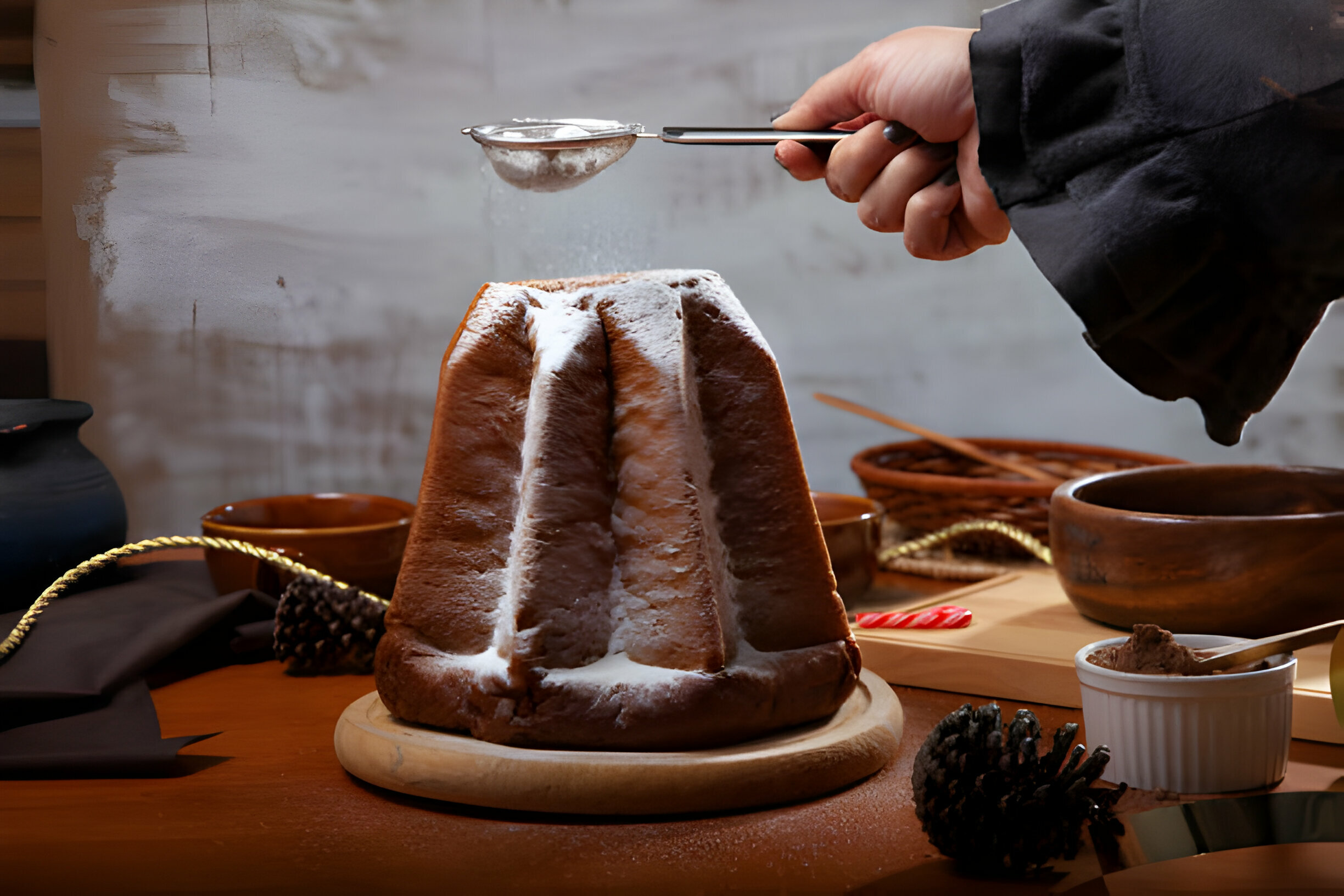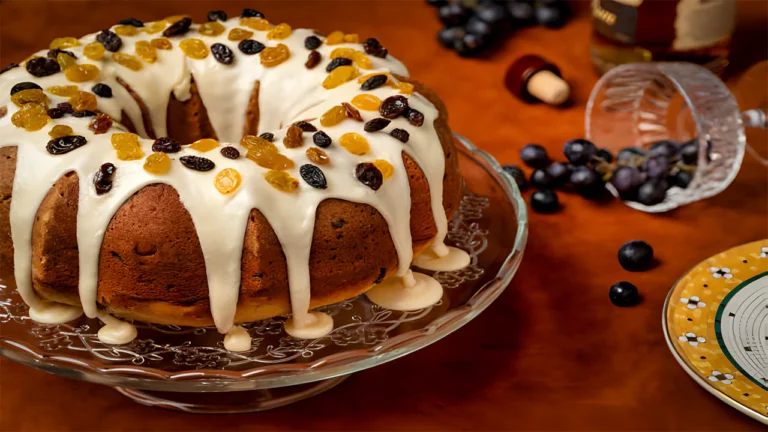Introduction to Bundt Cake
The Origin and Popularity of Bundt Cake
Once upon a time, in the bustling kitchens of America, a cake was born – not just any cake, but the fluted cakes. This delightful dessert, with its distinctive ring shape, has origins that trace back to European confections like the Gugelhupf. However, it was in the United States where the Bundt cake truly found its fame. The name “Bundt” itself, a twist on the German word for ‘bond’ or ‘bunch’, reflects the cake’s ability to bring people together, making it a staple at gatherings and celebrations.Bundt cakes are not generally associated with any single recipe.
The rise of the Bundt cake to stardom can be credited to the clever design of the Bundt pan, popularized in the 1950s and 60s by Nordic Ware. This pan, with its fluted sides and central tube, not only imparts the cake’s iconic shape but also ensures even baking – a true marvel in the world of confectionery! It’s no wonder that the this dessert quickly became a household favorite, turning every baking endeavor into a chance to create something both beautiful and delicious.
Definition and Basic Components
At its heart, a Bundt cake is a simple yet elegant dessert. Traditionally made with the basic ingredients of flour, sugar, and eggs, it embodies the essence of classic baking. But don’t let its simplicity fool you; the Bundt cake is a canvas for creativity. Whether you stick to the basics or venture into more adventurous flavors, each Bundt cake is a testament to the baker’s artistry.
The beauty of the Bundt cake lies not just in its taste but also in its versatility. From the rich, buttery texture of a classic recipe to the incorporation of fruits, nuts, and spices, the possibilities are endless. Each ingredient adds its own unique touch, making every Bundt cake a delightful surprise.
Historical Background of Bundt Cake
European Roots and American Adaptation

The tale of the Bundt cake is a delicious slice of culinary history, blending European tradition with American innovation. Its ancestor, the European Gugelhupf, was a brioche-like cake popular in parts of Germany and Austria. This cake was known for its distinctive ring shape, achieved by baking in a circular mold with a central tube.
When the Bundt cake made its way across the Atlantic, it underwent a delightful transformation. In the hands of American bakers, the traditional recipe evolved, adapting to local tastes and ingredients. The Bundt cake became a symbol of American baking ingenuity, retaining its classic shape while embracing a variety of flavors and textures. This adaptability is what made the Bundt cake a beloved fixture in American homes, turning it into a versatile dessert suitable for any occasion.
The Rise of Bundt Cake in the 20th Century
The 20th century witnessed the meteoric rise of the Bundt cake, a rise that can be largely attributed to a single kitchenware company: Nordic Ware. The introduction of the aluminum Bundt pan in the 1950s marked a turning point in the cake’s history. This new pan, with its non-stick surface and distinctive fluted design, made Bundt cake baking a breeze.
It wasn’t long before this dessert cake became a cultural phenomenon. The 1960s saw the cake’s popularity soar, thanks in part to the famous “Tunnel of Fudge” cake, which clinched a prize in the Pillsbury Bake-Off. This event catapulted the Bundt cake into the limelight, making it a household name. this dessert had become more than just a dessert; it was a symbol of American baking, a testament to the joy of creating and sharing delicious, beautiful cakes.
Ingredients and Variations
Key Ingredients of Bundt Cake
Diving into the heart of Bundt cake, we find a symphony of simple yet essential ingredients. The recipes for this classic dessert is a harmonious blend of flour, sugar, eggs, and butter. These foundational elements provide the cake with its signature tender crumb and rich flavor. Flour forms the backbone, giving structure to the cake, while sugar sweetens the deal. Eggs, the versatile stars of baking, add moisture and act as a binding agent, and butter brings in a luxurious richness that makes every bite a melt-in-your-mouth experience.From the rich, buttery texture of a classic recipe to the incorporation of fruits, nuts, and spices, the possibilities are endless.Bundt Cakes Archives – Cloudy Kitchen
But the magic of Bundt cake doesn’t stop with these basic ingredients. Bakers often incorporate baking powder or soda, lending the cake a delightful fluffiness. Vanilla extract is a common addition, infusing the cake with a warm, aromatic flavor. For those who love a bit of tang, sour cream or yogurt can be added to the batter, enhancing the cake’s moisture and adding a subtle complexity to its taste.
Flavor Variations and Innovations
The realm of Bundt cake is one of endless creativity. While the traditional Bundt cake is a celebration of simplicity, modern variations have taken the cake to new heights of flavor and artistry. Chocolate, lemon, almond, and spice are just a few of the myriad flavors that have found their way into Bundt cake recipes.For the spice enthusiasts, a spice Bundt cake.
Chocolate Bundt cake, rich and decadent, is a chocoholic’s dream come true. Lemon Bundt cake, with its zesty, refreshing flavor, is like a burst of sunshine on a plate. Almond Bundt cake offers a nutty, elegant twist, perfect for those who crave a subtle yet distinct flavor. And for the spice enthusiasts, a spice Bundt cake, brimming with cinnamon, nutmeg, and cloves, is the epitome of cozy comfort.

These variations are not just about flavor; they’re about making each Bundt cake a unique creation. From adding fruit fillings to experimenting with glazes and icings, the possibilities are as limitless as the baker’s imagination. The Bundt cake, in all its forms, remains a testament to the joy of baking and the endless potential of a simple recipe.Vanilla extract is a common addition, infusing the cake with a warm, aromatic flavor.
Bundt Cake Design and Preparation
Design and Preparation Techniques
The Bundt cake is not just a feast for the taste buds but also a visual delight, thanks to its unique design. The secret behind its distinctive look lies in the Bundt pan. This special pan, typically featuring fluted or grooved sides, creates the cake’s signature ring shape. But it’s not just about aesthetics; the pan’s design also plays a crucial role in the baking process. The central tube of the Bundt pan allows for even heat distribution, ensuring that the cake bakes uniformly and develops a perfectly golden crust all around.
When it comes to preparing a Bundt cake, there are a few key techniques to ensure success. First and foremost, properly greasing the pan is crucial. This step prevents the cake from sticking and helps maintain the intricate design of the pan. Some bakers prefer to use butter or shortening, dusted with a bit of flour, to create a non-stick surface.
Another important aspect is the batter consistency. Bundt cake batter should be thick enough to hold its shape yet pourable. This consistency ensures that the batter fills the pan’s grooves and rises evenly during baking. Overfilling the pan is a common pitfall; filling it only about two-thirds full allows the cake to expand without overflowing.
Baking Techniques for Perfect Bundt Cake
Achieving the perfect Bundt cake requires a balance of time and temperature. Baking at the right temperature is crucial; too hot, and the outside will burn before the inside is done; too cool, and the cake won’t rise properly. Most Bundt cakes bake beautifully at a moderate temperature, typically around 350°F (175°C).
Timing is equally important. Due to their thickness, Bundt cakes generally require a longer baking time than standard cakes. It’s essential to check the cake towards the end of the recommended baking time using a skewer or toothpick. If it comes out clean, the cake is done.Bundt cakes often taste even better the next day.
Once baked, cooling the these treats properly is the final step in achieving perfection. Allowing the cake to cool in the pan for about 10 minutes helps it set and makes it easier to remove. However, waiting too long can cause the cake to stick. Inverting the pan onto a cooling rack and gently tapping it should release the cake, revealing its beautiful, detailed shape.To bake in standard sized tins, Bundt recipes need conversion.

Serving and Pairing Suggestions
Presentation and Serving Tips
A Bundt cake, with its elegant design and sumptuous flavors, is a showstopper on any table. Presentation plays a key role in elevating the overall experience. A simple dusting of powdered sugar can add a touch of sophistication, while a drizzle of glaze or icing can enhance both the cake’s flavor and appearance. For a more festive look, edible decorations like berries, citrus zest, or edible flowers can be artfully arranged on top.
When it comes to serving, the cake is as versatile as it is delicious. It can be sliced into thick or thin wedges, depending on the occasion. For a more formal setting, serving individual slices on dessert plates, perhaps accompanied by a dollop of whipped cream or a scoop of ice cream, adds an elegant touch. In a casual gathering, the cake can be placed on a central platter, inviting guests to help themselves.
Ideal Pairings with Beverages and Occasions
The Bundt cake’s versatility extends to its pairings with beverages. For a classic combination, coffee and Bundt cake make a delightful duo, the bitterness of the coffee balancing the cake’s sweetness. Tea, with its myriad flavors, from robust black teas to delicate herbals, also pairs beautifully with different types of Bundt cakes. For a celebratory twist, a glass of sparkling wine or dessert wine can complement the cake’s richness.
Bundt cakes fit seamlessly into various occasions, from casual brunches to elegant dinner parties. A lemon or fruit-flavored Bundt cake is perfect for a springtime brunch, while a rich chocolate or spiced Bundt cake suits the cozy ambiance of a winter gathering. No matter the occasion, a Bundt cake is always a welcome addition, bringing joy and sweetness to any celebration.
Frequently Asked Questions
Common Queries About This Dessert
Bundt cakes, with their unique charm and delicious flavors, often bring up a host of questions. We present some of the most commonly asked questions and provide helpful answers:
-
Can I use a regular cake mix in a Bundt pan? Absolutely! A regular cake mix works well in a Bundt pan. Just remember to grease the pan thoroughly and adjust the baking time as needed, since Bundt cakes typically take longer to bake.
-
How do I prevent my cake from sticking to the pan? The key is to grease the pan thoroughly. Use butter or non-stick spray, making sure to get into all the grooves. For extra assurance, dust the greased pan with flour or cocoa powder (for chocolate cakes).
-
Can Bundt cakes be made in advance? Yes, Bundt cakes are great for making ahead. They often taste even better the next day as the flavors meld. Just make sure to store it properly, covered, at room temperature.
-
What’s the best way to add glaze or icing? For a smooth finish, pour the glaze or icing over the cake while it’s slightly warm. This allows the topping to set nicely and adhere to the cake.
Tips and Tricks for Beginners
For those new to the world of Bundt cakes, here are some tips to ensure baking success:
- Don’t Overmix the Batter: Overmixing can lead to a dense cake. Mix just until the ingredients are combined.
- Check for Doneness Properly: Use a skewer or toothpick inserted into the thickest part of the cake. If it comes out clean, the cake is done.
- Cool Before Inverting: Let the cake cool in the pan for about 10 minutes before inverting it onto a wire rack. This helps prevent sticking and breaking.
- Experiment with Flavors: Don’t be afraid to try new flavor combinations or add-ins like nuts, fruits, or spices.
Embracing the Bundt Cake Tradition
The Enduring Appeal of this dessert
As we come to the end of our delicious journey, it’s clear why the cake has stood the test of time. This humble dessert, with its simple beginnings and versatile nature, has become a beloved icon in the world of baking. Its enduring appeal lies in its perfect blend of elegance and simplicity, making it suitable for a wide range of occasions, from casual family gatherings to grand celebrations.
ndeed, the Bundt cake is more than just a dessert; it’s a canvas for creativity and a symbol of shared joy. Additionally, whether it’s a traditional recipe passed down through generations or a new, inventive flavor, each cake tells a story that reflects the baker’s personal touch. The this dessert invites us to experiment, to share, and to savor the sweet moments in life.
Encouragement to Experiment and Enjoy
As we bid farewell to the world of Bundt cakes, let this be an invitation to embrace the art of baking. Whether you’re a seasoned baker or just starting out, the fluted cakes offers endless possibilities to express your culinary creativity. Experiment with flavors, play with decorations, and most importantly, share your creations with loved ones.The Bundt cake, in all its forms, is a testament to the joy of baking.
The fluted cakes, in all its forms, is a testament to the joy of baking. It reminds us that sometimes, the simplest things can bring the greatest pleasure. So, preheat your ovens, gather your ingredients, and thus embark on your own Bundt cake adventure.Happy baking!
